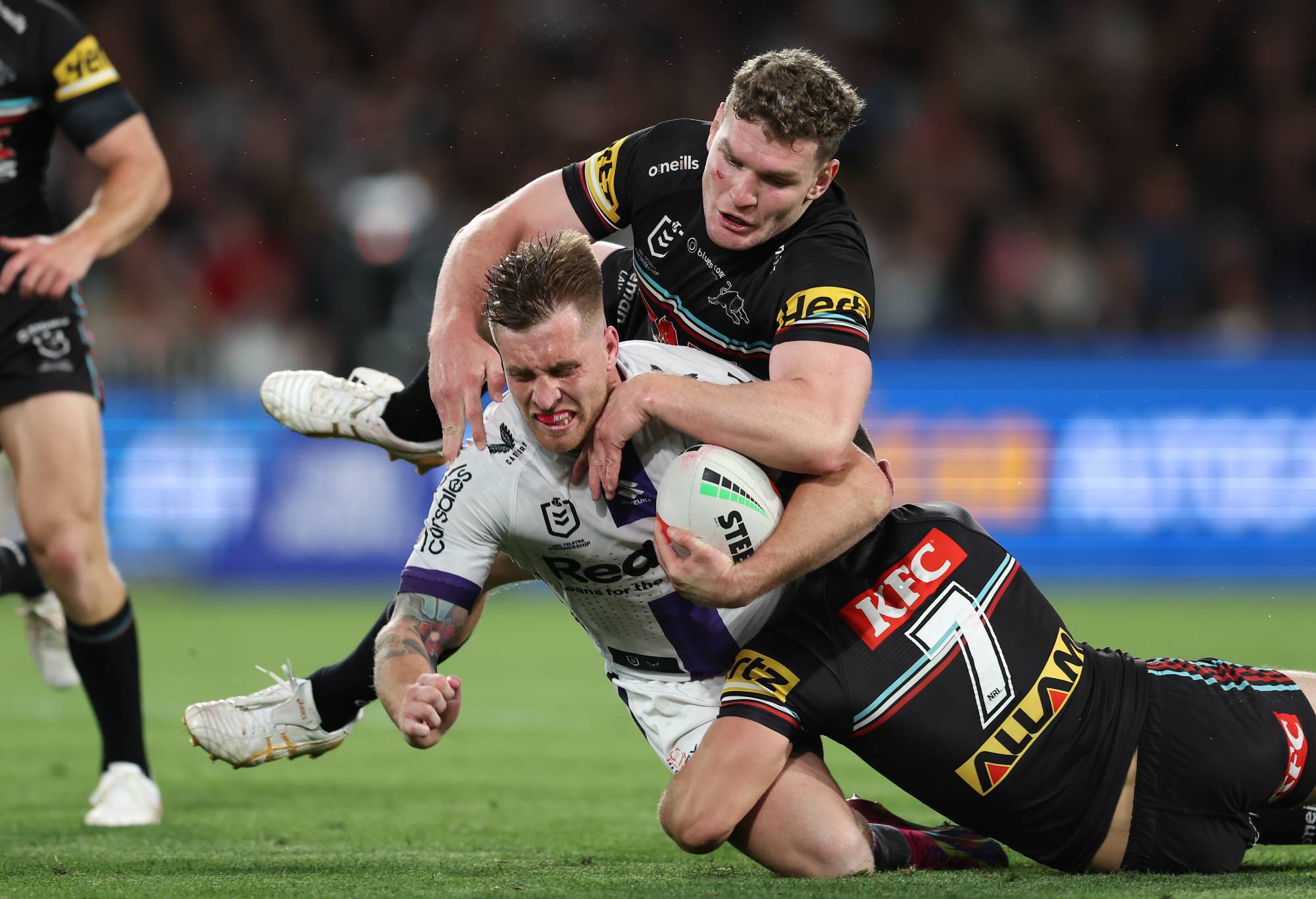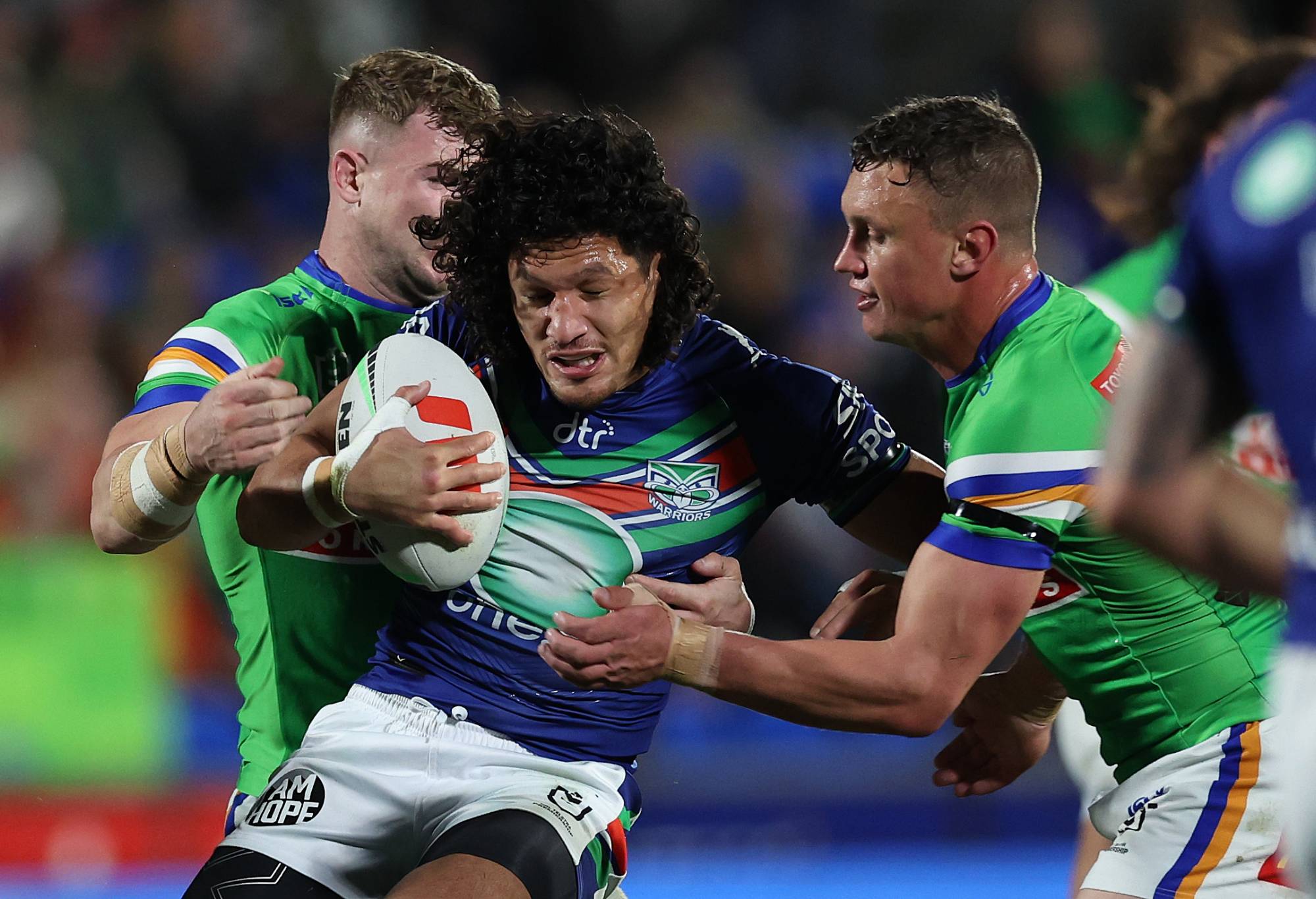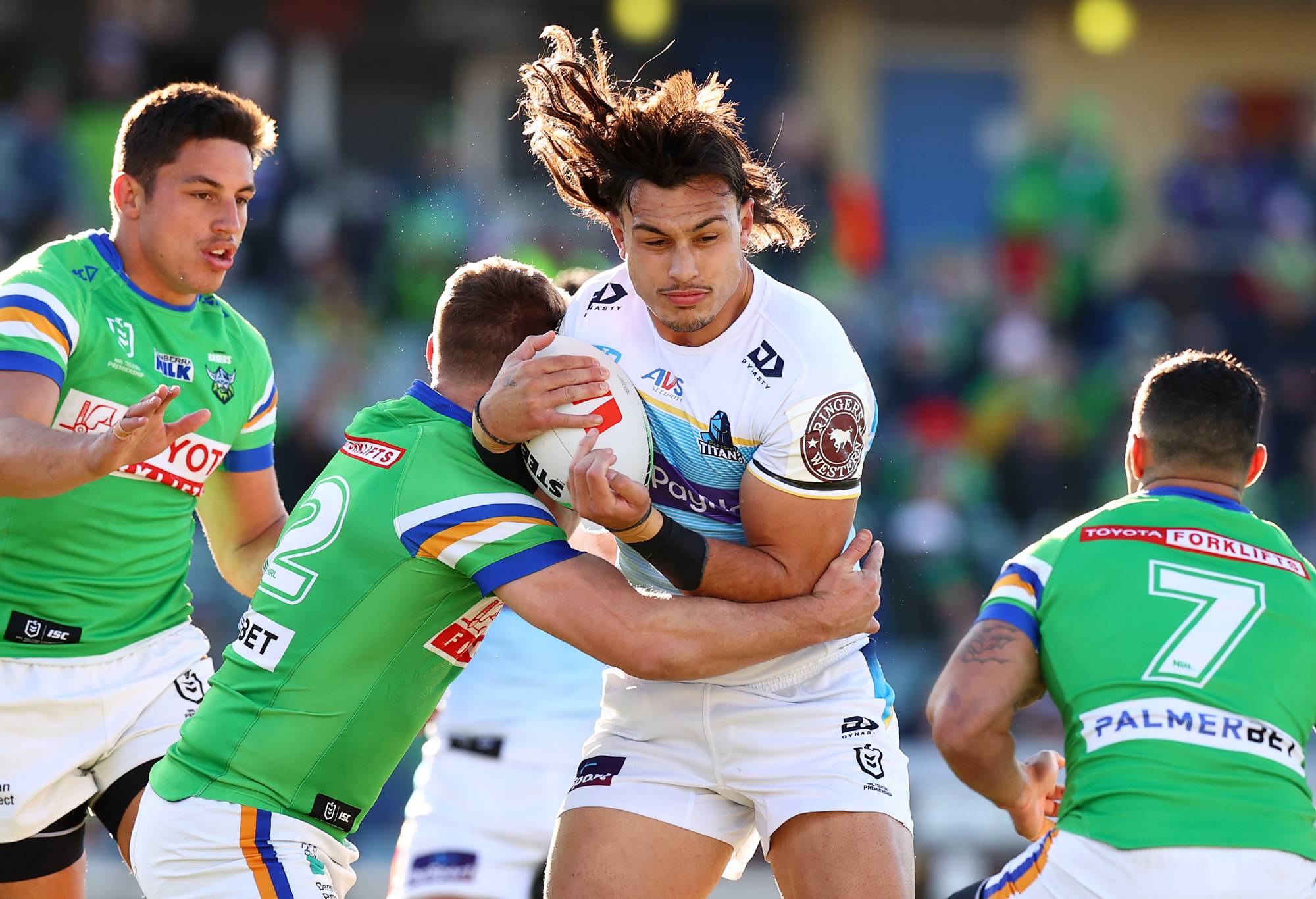Another year in the books, another huge stash of rugby league tea leaves to pore over.
With the 2023 NRL season at a close, what have we learned about the game of rugby league? It’s still a great product, if you excuse the term, and indeed, the fans appear to be loving it too.
Peter V’landys has already crowed about the six again and how much it has improved the game, but really, improve is never the word when it comes to sport. Things change, but improvement is impossible, really. It’s just change.
Just like last year, the main tactical trend of 2023 might just be that there’s a lot more tactics going on. The coach as an auteur is now something we expect from an NRL level boss.
The proper rugby league men are largely gone, and where they remain, they tend to have a very strong assistant, like Kristian Woolf – head coach in waiting – behind Wayne Bennett and Lee Briers with Kevin Walters, tasked with controlling that part of the game.
Of the 17 NRL teams, we now have four coaches who are very long-term and highly adaptable – Trent Robinson, Craig Bellamy, Brad Arthur and Ivan Cleary – as well as two who are both long-term and, for want of a better word, old school, with Bennett and Ricky Stuart.
The majority now is the new breed, who have only ever coached in the six again era, with big data and expanded backroom staff: Jason Demetriou, Craig Fitzgibbon, Todd Payten, Andrew Webster, Adam O’Brien, Cameron Ciraldo.
Someone like Anthony Seibold seemed like an outlier in 2017, but now, there’s plenty more like him.
It will be interesting to see where Des Hasler – always able to adapt – fits in at the Titans, or what Shane Flanagan does at the Dragons. What happens at the Tigers under Benji Marshall is anyone’s guess.
What is clear is that the coach is now the most important figure, something that really wasn’t the case for a very long time in rugby league. Just like last year, that is our main trend, and everything stems from there.
The NRL is more ideological than ever
At the end of the 2022 season, one of the great takeaways was the growth in ideology among the best teams.
Back then, you could make the argument that four of the top eight – Penrith, Cronulla, Parramatta and Souths – were purely ideological teams, with defined coaching philosophies that you can depend on them to play every single week, regardless of opposition.
Now, you have six of the top eight and another four outside of the eight, with those four above plus the Broncos, Warriors, Manly, Newcastle and the Dolphins all showing fairly rigid ideas of how they thought they won games of football that rarely deviated.
Some were flamboyant, like Seibold’s Manly, especially by the end of the year when they got their systems embedded, and some were highly conservative, like the Dolphins. Some were a hybrid: the Warriors were very conservative until the final third of the field.
There’s four at the bottom who really struggled, either through poor execution (the Tigers attack, the Titans defence) or lack of continuity (the Bulldogs personnel, the Dragons coaching), to develop any coherent plan, and suffered badly for it. Unsurprisingly, these were the worst teams.
Some of the year’s biggest sliders were those that, to some degree, fought the last war. The Raiders and Cowboys, looked moribund and proved only good enough to beat bad teams. Come the crunch, they were miles off it.

(Photo by Matt King/Getty Images)
The Storm and Roosters really struggled to put on consistent attack because, where other teams had systematic approaches, they remained wedded to the individuals-first styles that were very effective in the pre-set restart era.
Ideology isn’t the be-all and end-all – just look at Souths, as pure as they come in playing style – but the expansion of this kind of football on a macro level shows that it is the new standard in the NRL.
A bigger question might be why. As has been written extensively elsewhere, the idea that a soccer coach would not have a coaching philosophy would be laughable, even at a low level, but would largely be laughed at if brought up to a rugby league coach – at least, it would have been five years ago.
But the proliferation of data and analysts, plus a faster, more attack-focussed game in the six again era, has made what was perhaps the most weak-link sport even more inclined that way. What you do at all levels matters a lot, and that’s where the coaching philosophy kicks in.
Take the Storm: time was, their calling card was Craig Bellamy’s licence, which could be given to the very best players – Cam Munster, Jahrome Hughes and Harry Grant in this incarnation – while giving everyone else much more specific instructions.
It was, to use the jargon, based on qualitative advantage: our good guys are the best, everyone else will do the work and they will deliver us the win.
The famed ‘next man up’ at Melbourne was as much predicated on a lot of their salary cap being invested in not that many players, the guys you paid the big bucks to win Premierships knowing that you saved the cash in honest toilers elsewhere.
The Roosters, with James Tedesco, Joey Manu and Sam Walker, were not a million miles away from this either – and when a star went down, or was off their best, the system wasn’t there to take over like it was at other clubs.
Their upsurge coincided with the best players being back, then faded when they went away again.
Now, the star players are much more readily counteracted through collective effort – everyone has seen everything a million times on video – and thus that aspect is a lot easier to shut down.
Champions gonna champion, so it doesn’t work every time, but against the best defences, it rarely does these days.
On the other side of the ball, the ability to plug and play into a system is more valued. Where once you wanted the next man up, now the system is the next man.
Reece Walsh, the Broncos’ best player, was able to drop out without missing a beat because Tristan Sailor, his replacement, knew exactly what he was doing at all times.
Penrith dropped an entire first grade team and beat Newcastle with a NSW Cup playing exactly the same way as their first grade.
Souths’ reggies won the State Championship and, if you’d have squinted, you could have imagined it was the firsts playing, because the style was identical.
This is why ideology matters. The best way to survive a long season with inevitable injuries and suspensions is to be stylistically consistent across the board, with the coach at the top. The system backs you robust, and the coach instils the system.
That has calcified even further in 2023 than it was in 2022, which was itself more than in 2021 and before.

(Photo by Phil Walter/Getty Images)
Sustainability in attack
Hand in hand with ideology goes the growth of sustainable scoring patterns. If you’re asking the collective to take over where the individuals used to be, then you need to have everyone singing from the same hymn sheet.
With more video and more data, plus coaches with clear ideologies, we have seen more tries scored in more similar fashions. It’s attempting to work out what is a repeatable, high-probability method of scoring that suits the individuals that you have at your disposal.
Where teams relied upon ‘heads up footy’ 20 years ago, then block plays ten years ago, now there is a hybrid of both, which we called ‘patterns’. There was a deep dive into this before, but it bears repeating on a high level.
In short, it was this: the best teams build structures that they know can get the ball to their most dangerous players, who take it from there with individuality and spontaneity.
Walsh given space on the right for Brisbane, or Souths’ shift to the left to Latrell Mitchell/crash to the right for Keaon Koloamatangi, or the Warriors’ move to get Dallin Watene-Zelezniak pointed at the corner flag, or Cronulla’s early shift to the right, or Mitchell Moses’ short side play, or Kalyn Ponga popping up short to Best, or long towards Dom Young. You can close your eyes and see the move.
The fundamental point was creating multiple options, then practising them over and over so that they become second nature, aspects of your attack that you can lean on when the chips are down.
When you have those embedded patterns, they come repeatable and adaptable, meaning you can play them with infinite variation while the defence has to keep guessing. It empowers your best players without overloading everyone else.
Off the ball work matters much more
A secondary aspect of this is the growth of off-ball work. The smaller bodies in the middle that has accompanied the six again era has enabled coaches to ask more of their forwards in terms of effort plays. Once the preserve of defence, it is now just as important in attack.
Cronulla were at the forefront of this in 2022, but now, plenty of others are doing it too. It’s perhaps the biggest improvement at Brisbane in terms of elevating their attack, and the Warriors’ rise has also benefited massively.
Without being privy to team meetings, the suspicion would be that data and video matter a lot here, too.
Players in the middle who were inactive – watching your mate, lurking, dying on the play – are now being called out for not providing the free services. Push supports cost nothing but energy.
Changes in body profiles might explain this.

(Photo by Mark Nolan/Getty Images)
Once, it was bulk that mattered in a contest, with the ability to physically dominate but now, with better wrestling knowledge on the floor and a faster game, the floor is increasingly being won by those who are in the superior body position before the contact occurs.
That might be choosing the method of initiating it, as some props do by hitting high (Payne Haas, Tino Fa’asuamaleaui, Tom Burgess) or through having support runners who occupy tacklers through their presence and deception.
There’s probably plenty in the proliferation of ‘bumper bar’ chat that speaks to how forwards are entering contact, and if there’s someone running alongside, the ball carrier can choose their point of entry to the contest a lot more easily, allowing them to hit the floor quicker.
And if someone isn’t there, they’re going to get noticed then dragged out for it in the team meeting on Tuesday about it.































































































